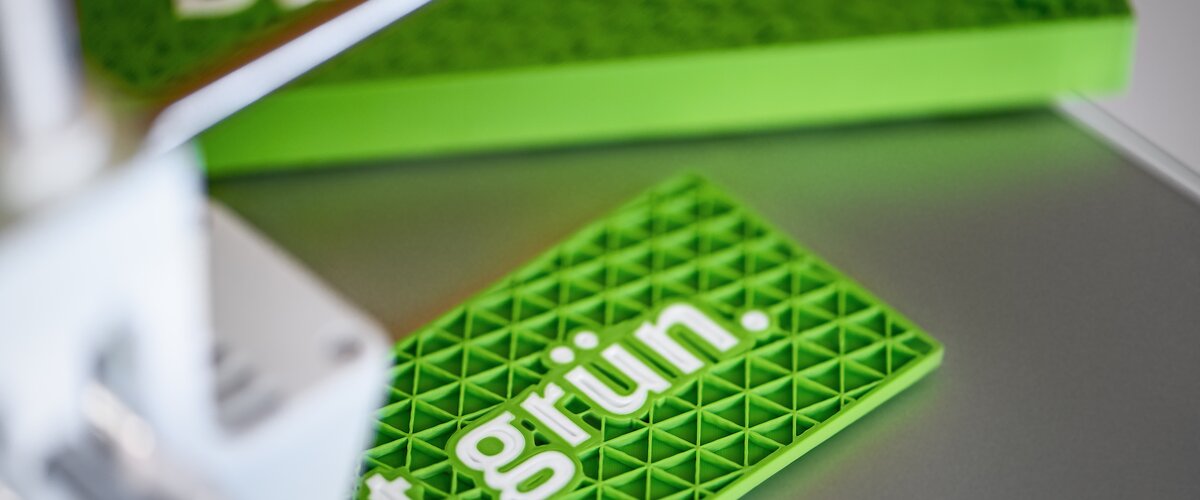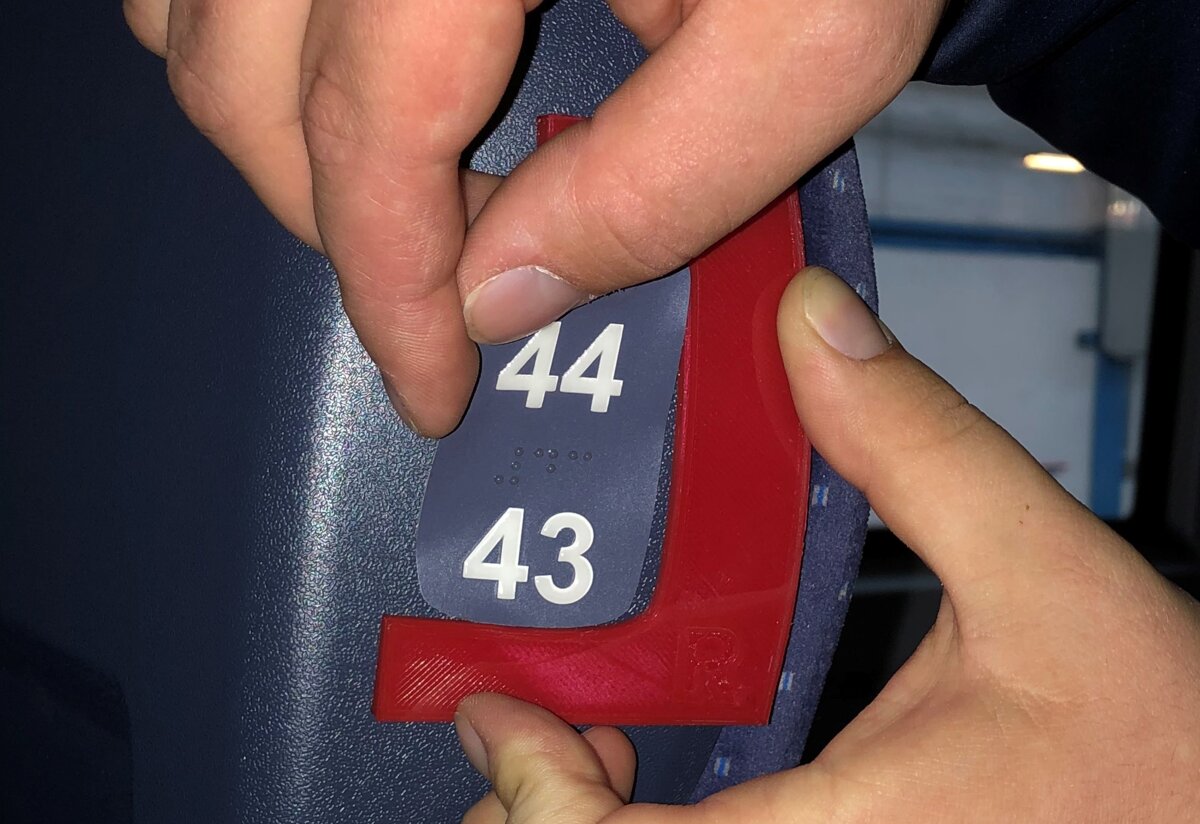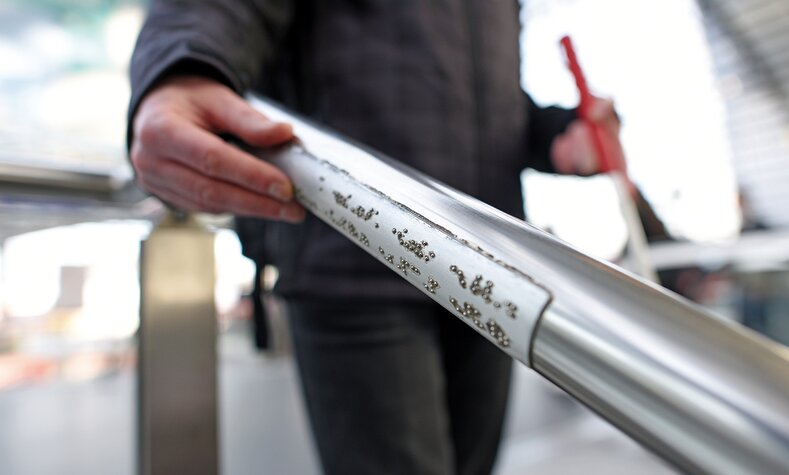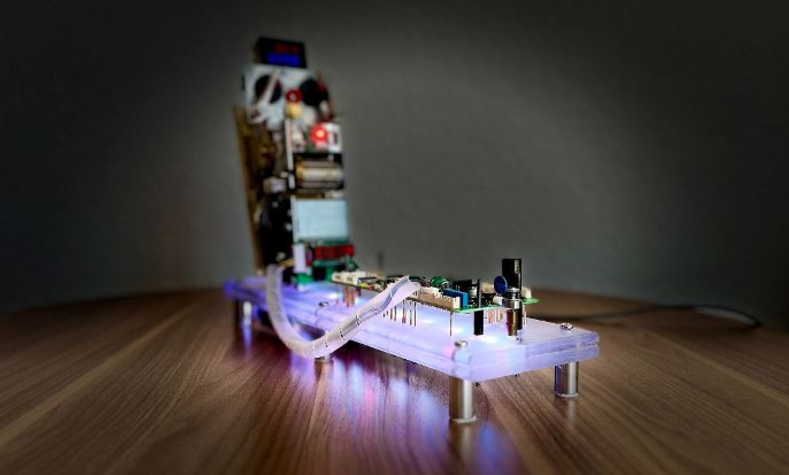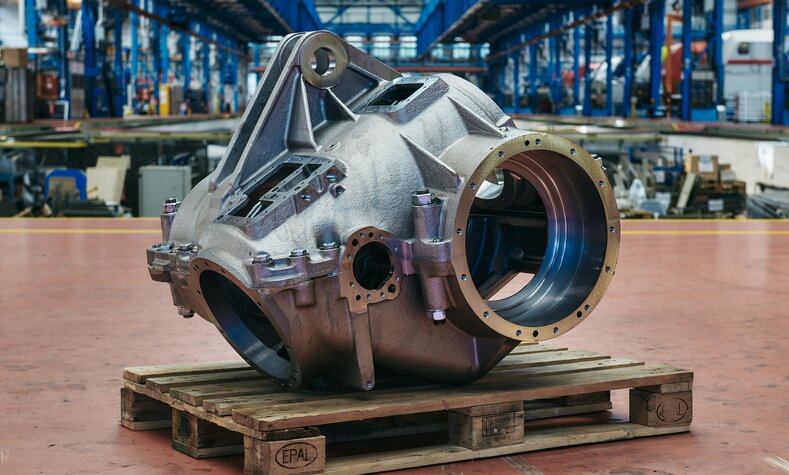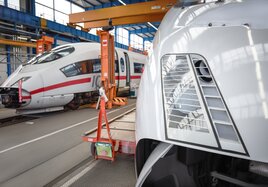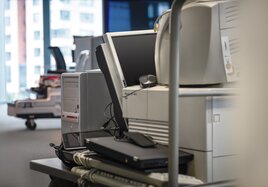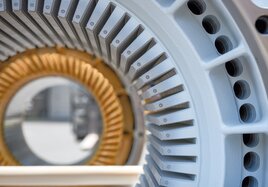Trains consist of many individual components, some of which are unique. It often takes a lot of time and materials to keep small quantities of them available. DB has found a solution to this in 3D printing, which makes it possible to work more efficiently and with fewer resources. The process has been in use at DB since 2015.
In this computer-based method, the original component is first measured or scanned and then converted to digital data. The new part is built up layer by layer, in either plastic, metal or another material.
A powder bed fusion process is normally employed for small components with very fine structures. The powder is fused on in layers at the desired sites using a laser beam. This process is repeated hundreds or thousands of times depending on the size of the component. Alternatively, for larger and coarser structures, metal wire or plastic is melted and applied.
Recycled filaments for even greener 3D printing
New materials for 3D printing are constantly tested at maintenance depots. One of these materials is filament - a kind of thread - made from recycled plastic-like fibers. Several of these materials are used for printing tools for depots and production. For example, recycled filaments made from old ski boots are tested. The first piece printed with 100 percent recycled filament is a positioning device for applying symbols in trains. If these resource-saving materials pass the test, they may soon be used in other areas as well.
Less raw material and transport
3D printing offers even more environmental benefits. It allows to produce components exactly when they are needed – and in next to no time. In this way, long waiting times can be avoided, and trains are getting ready for use on the track more quickly. 3D printing can be used to replace components that are no longer available, extending the life cycle of our assets.
As well as saving time, 3D printing also conserves valuable raw materials since stocking large quantities of spare parts is no longer necessary. Manufacturing them as and when needed is possible. And only the raw material required for the component in question is needed. That cuts down on transport and CO2, as parts can be printed on site and no longer have to be transported over long distances.
In-house collection for recycling 3D printing waste
The nature of 3D printing means it is a technology that is sparing with resources and generates very little waste. In practice, however, not every print is successful on the first attempt, and scrap material and waste are sometimes produced. DB teamed up with the company Recycling Fabrik to introduce a system in which the materials most commonly used in 3D printing can be collected and recycled at all DB locations throughout Germany.
DB's partner first shreds the waste material and makes it into granules. Then it transforms these into filaments, which a special machine winds onto reusable spools. In this way, the recycled plastic fibers can be used as new. With this customized collection system, therefore, we are putting materials that would otherwise be disposed of back into the manufacturing cycle.
3D printing as a vocational training subject
3D printing is as an integral part of vocational training at DB. Vocational trainees at our vehicle maintenance depots learn about 3D printing during their training and work independently on designing and printing materials and equipment for everyday use.
Awarding innovative ideas
The annual Group-wide 3D printing competition recognizes innovative 3D printing ideas. From brackets for reading lamps and replacement covers for surveillance cameras to robotic tools for filling ICE tankers - the award-winning 3D printing applications are diverse. Last year, for example, a bench made from recycled concrete won the special category for sustainability.
<
200000
parts
already made in 3D printing
Future technology to meet requirements
3D printing has enormous potential for DB. Over 200,000 parts and spare parts for more than 1,000 different applications, from coat hooks, CO2 sensors for offices and handrail signs in braille to safety-critical braking components on vehicles have already been printed.
The use of this print-on-demand process makes a further important contribution to environmental protection.
